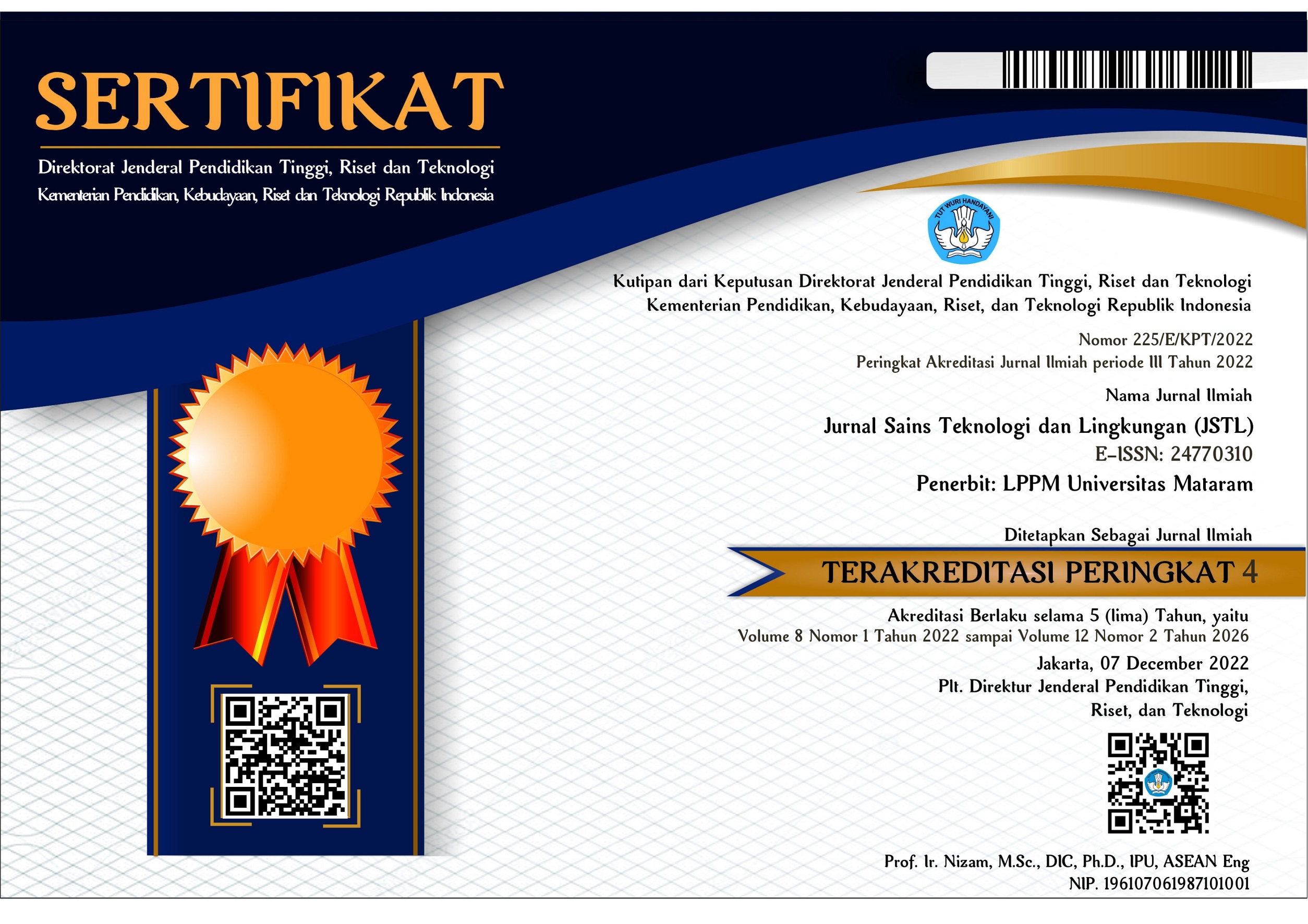Akurasi Diagnostik Kecacingan Metode Direct Slidedan Kato Katzpada Penderita Helminthiasis Di Kota Mataram
DOI:
https://doi.org/10.29303/jstl.v0i0.263Keywords:
helminth infection, direct slide, kato katzAbstract
Worms are diseases caused by the entry of parasites (in the form of worms) into the human body. The types of worms that are often found to cause infection are roundworms (Ascarislumbricoides), whipworms (Trichuris trichiura) and hookworms (Necatoramericanus) which are transmitted through the soil (Soil Transmitted Helminthiasis. Examination of helminth infections can be done qualitativelyand quantitative. The qualitative examination that is often used is the Direct slide method. while the quantitative examination that is often used is the Kato Katz method. This study aims to compare the accuracy of the worm infection examination between the Direct slide method and the Kato Katz method by examining stool samples. This research was conducted on 47 Ampenan Elementary School Students located on the coast in Mataram City, where the coastal area is one of the good breeding grounds for worms. This study used a comparative analytical research design with a cross sectional approach. To establish the diagnosis of helminthiasis and the type of worm that infects, an examination of worm eggs in stool samples is carried out using the Direct slide and Kato Katz methods. The results showed that the number of samples infected with STH was more commonly found by the Kato-Katz method. The results of measurements using the Direct slide method and the Kato Katz method showed that the highest prevalence of STH infection was Ascaris lumbricoides infection. Direct slide method produces a sensitivity level of 95.16% and a specificity of 100%.References
Andaruni, Adisti., 2012. Gambaran Faktor-Faktor Penyebab Infeksi Cacingan pada Anak di SDN 01 Pasirlangu Cisarua. Fakultas Ilmu Keperawatan Universitas Padjajaran dan Rumah Sakit Hasan Sadikin. Bandung.Available at:http://www.journals.unpad.ac.id/index.php/ejournal/article/view/597
World Health Organization (WHO)., 2011. Soil Transmitted Helminthes. Intestinal Worms 2011. [online], Available at: http://www.who.int/intestinal worms/en/
Gandahusada, S., Ilahude, H.H.D., & Pribadi, W., 2004. Parasitologi Kedokteran Edisi Ketiga. Jakarta: Balai Penerbit FKUI.
Ideham, B. & Pusarawati, S., 2009. Buku Penuntun Praktis Parasitologi Kedokteran. Edisi 2. Surabaya : Airlangga University Press.
Wati Murti. S.E., 2011. Hubungan Perilaku Hidup Bersih Dan Sehat (PHBS) Dengan Kejadian Kecacingan Pada Siswa SDN Bangkal 3 Kecamatan Cempaka. Karya Tulis Ilmiah. Universitas Lambung Mangkurat : Kalimantan Selatan.
Brooker S., et al., 2000. Epidemology Single and Multiple Species of Helminth Infection Among School Children In Busia District, Kenya. East African Medicak Journal Vol.77 No. 3 March 2000, hal 1.Available at http://www.ajol.info/index.php/eamj/article/view/46613
Kementerian Kesehatan RI Direktorat Jenderal PP dan PL., 2012. Pedoman Pengendalian Kecacingan. Jakarta: Subdit Pengendalian Penyakit dan Penyehatan Lingkungan.
Samad. H., 2009. Hubungan Infeksi Dengan Pencemaran Tanah Oleh Telur Cacing Yang Ditularkan Melalui Tanah Dan Perilaku Anak Sekolah Dasar Di Kelurahan Tembung Kecamatan Medan Tembung. Universitas Sumatera Utara : Medan.



1.png)











